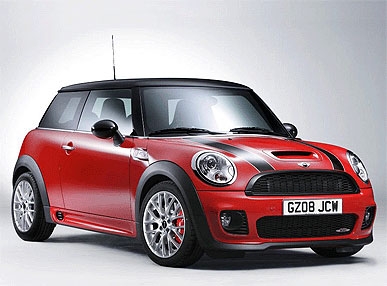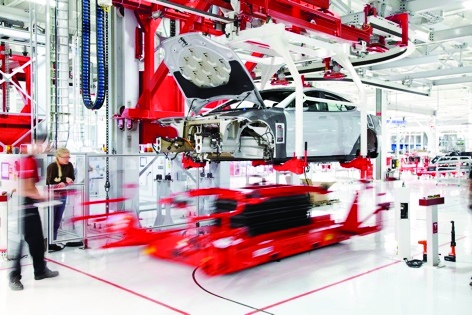 When BMW developed the first edition of its modern Mini, which went on sale in 2000, it pioneered the notion of mass customisation in the automotive sector. With hundreds of options to choose from both inside and outside the car, the number of possible permutations was extensive.
When BMW developed the first edition of its modern Mini, which went on sale in 2000, it pioneered the notion of mass customisation in the automotive sector. With hundreds of options to choose from both inside and outside the car, the number of possible permutations was extensive.
This notion was a hit with customers, who embraced the ability to specify a car to their individual tastes, and was also a boon for the company’s top line – buyers typically spent far more than average on optional extras. The snag was building the cars to order, in an industry accustomed to planning years in advance, building job lots and selling them in pre-determined trim levels. BMW made it work by positioning the Mini as an upmarket choice with premium pricing, covering the additional cost of the complex logistics required behind the scenes.

Some other manufacturers have followed Mini’s example in the 16 years since, but build-to-order and mass customisation remains a challenge in the automotive sector, even for brands that enjoy premium profit margins.
The arrival of Industry 4.0 could change all that, however. The term refers to a broad coalition of new manufacturing possibilities enabled by the collection, distribution and utilisation of data, as well as the seamless connections between processes enabled by the internet. Automation unlocked in this way could bring customisation within the reach of even the most cost-conscious buyer.
Today, most car buyers research their chosen vehicle online long before visiting a showroom. The manufacturers support this with configurators on their websites that allow customers to select options and preview their car. But the next step is typically old fashioned and manual, with people talking to a salesperson about the options they’ve chosen – with all the consequent potential for error and dissatisfaction inherent in the salesperson-customer interaction.
A smarter solution might be to connect the configuration and customisation activity directly into the ordering and manufacturing process, with dealers focusing instead on the more profitable business of vehicle servicing.

An Industry 4.0 approach puts the customer at one end of a chain of data, connecting via the internet through the manufacturer to all the myriad suppliers that provide the thousands of component parts that make up a modern vehicle. When the customer is satisfied with their configuration they can order and pay for the car on the spot. Their choices are then broken down into orders for separate components and pushed automatically down the supply chain to the providers of wheels, upholstery, paint and electronics.
From the perspective of the component manufacturer, it receives a data stream detailing the parts required along with scheduling information, so that its own automated processes know what varieties of components to build and when to send them. Items are loaded onto trucks in the exact sequence needed at the car factory, so that on delivery they can be unloaded and flow seamlessly onto the assembly line, ideally arriving just in time to minimise the need for storage. They’ll then quickly meet the shell of the car into which they’ll be bolted.
A single lorry arriving at the factory would contain a mixed batch of seats, for example, all trimmed in different fabrics and colours according to customer preferences, each destined for a particular customer’s car. RFID tags and barcodes would allow components to be tracked at every step of their journey from initial order to the supplier and to the finished car.
All of these steps have been possible for years – indeed a century ago cars were typically hand built to meet individual customer requirements. What Industry 4.0 allows is for this approach to scale up into the millions, while reining in costs and speeding up time to delivery, so that customers are not left waiting months for all of the pieces of their customised car to be brought together or to be in stock at the same time.
Today, car designers are already envisaging the vehicles of tomorrow, which are likely to be much more modular so that customers can decide what body shape, seating configuration, powertrain and power output they want, before even considering the many colours, materials and optional extras that will be offered. It’s also likely that we will see increasing collaboration between car makers and non-automotive lifestyle brands, perhaps with the likes of Nike, Barbour or even Waitrose becoming involved in the customisation and sale of vehicles, at a much deeper level than today’s branded special editions.
Bringing about the level of customisation and collaboration that Industry 4.0 unlocks will not be trivial. It will take expertise and understanding – the ability to optimise processes across long supply chains of fiendish complexity, creating the agility to ramp production up and down by wide margins and with minimal notice. But it can be done, and those companies that grasp the potential stand to gain a great many satisfied customers.
Eugene Smethurst is Director and process automation specialist AECOM





AI-generated medical responses need monitoring, study finds
This would negate most of the benefit of using AI in the first place, rather like the Locomotive Act 1865 that required any self-propelled road...